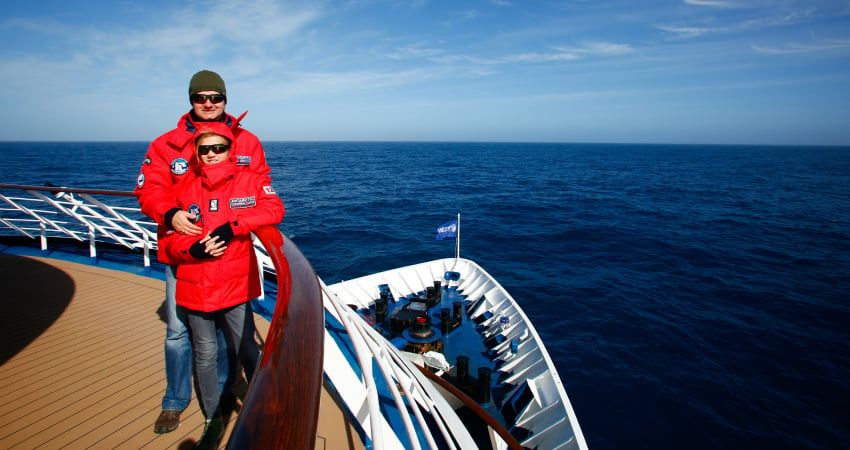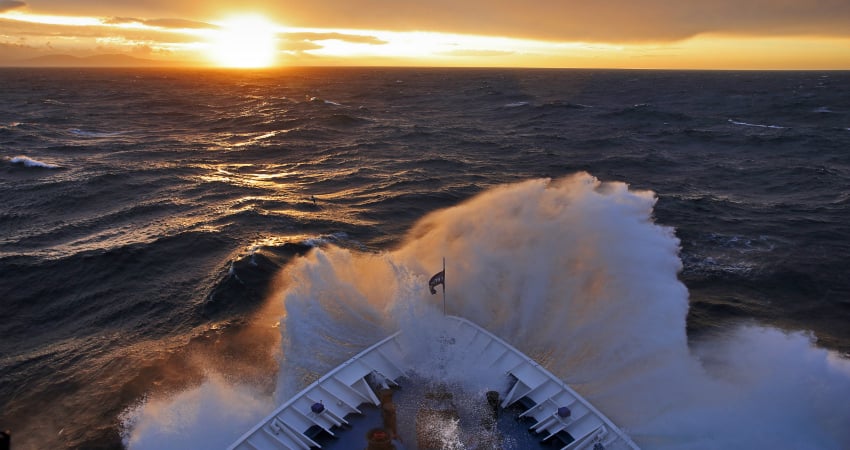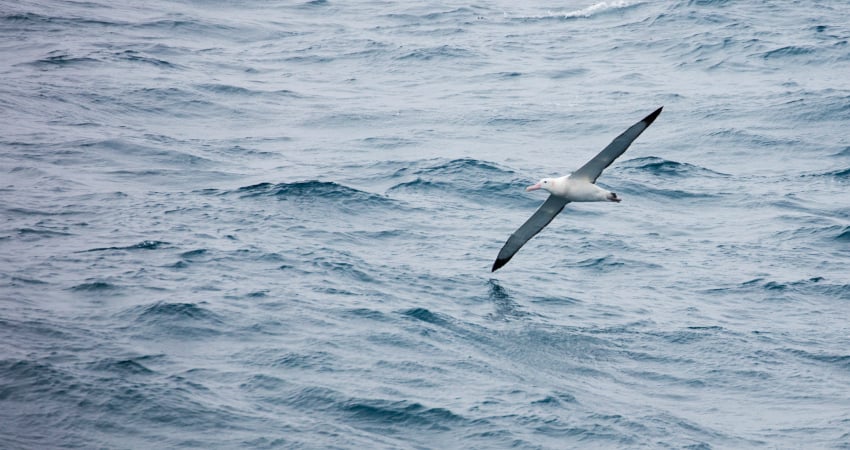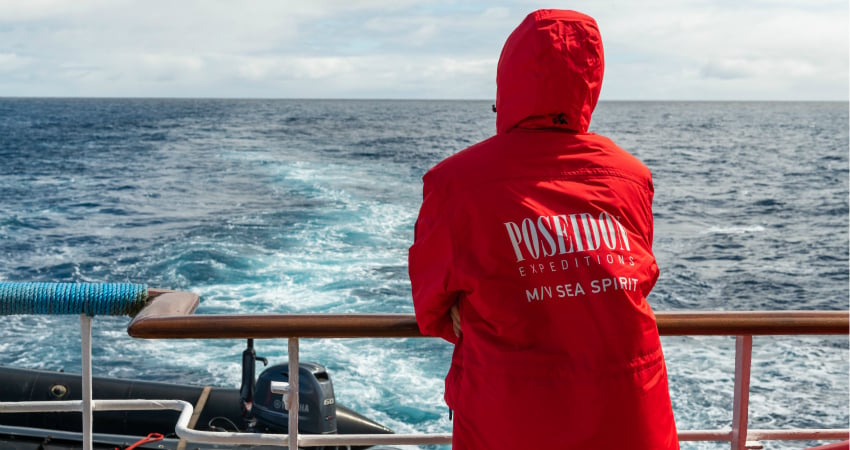Antarctica without Drake Passage
7 December, 2022

Even if you have never been to Antarctica, you have probably heard something about the Drake Passage. Traveling to Antarctica requires crossing this infamous body of water unless you want to skip the sea journey and get there by plane. However, there are several solid arguments for keeping the Drake Passage part in your voyage.
Reasons to cross the Drake Passage on your Antarctic trip
On a typical cruise to Antarctica, you will cross the Drake twice. The one-way crossing usually takes around two full days, depending on the weather. If conditions are favorable, a cruise leaving Ushuaia, Argentina, in the late afternoon could arrive in the South Shetland Islands in time for a late afternoon landing on the second full day of sailing. Otherwise, the first landing would usually occur on the third morning after leaving Ushuaia.
First, you can consider crossing the Drake Passage as a quintessential Antarctic experience. Drake Passage is the body of water separating the southern tip of South America and the northernmost reaches of the Antarctic Peninsula. All great polar explorers that came before us had to go through this crossing, so think of it as a rite of passage and an opportunity to appreciate how relatively easy it is to get to Antarctica today. You could never feel the same simply flying over it by plane.

Second, you can take the time required for the crossing and prepare for your first landing. The more you know before you start to explore Antarctica, the better, so fun and educational lectures aboard a cruise ship, polar movies and books will be a great start to your voyage.
Third, today’s ships are built to withstand the punishing impact of ocean waves and severe winds. Some expedition vessels, such as the Sea Spirit, even have stabilization systems to reduce the motion of the ship in heavy seas. Modern cruise ships also have the benefit of advanced weather monitoring technology. The arrival of a storm in the Drake can be predicted several days in advance, allowing captains to avoid the worst of the weather.
In between storm systems, the Drake can actually be quite calm. So, you can have either the dreaded “Drake Shake” or the merciful “Drake Lake”. It is likely you will experience some of both. During calm weather, you will observe albatross around the ship and tabular icebergs on the horizon while enjoying the freshest of ocean breezes.

Drake Passage in History
The Drake Passage is named after Sir Francis Drake, an English naval commander and explorer of the Elizabethan era. He was the second person to lead a circumnavigation of the world in a single expedition, during which he was said to be the first to sail into the eponymous passage when his ship was blown south during a storm in 1578, though this account is disputed. Francis Drake was knighted for his service in the Royal Navy but he was also a notorious privateer, slave trader and pirate known by his Spanish enemies as “El Draque”. His namesake passage, also known in Antarctic expedition circles as “the Drake”, is equally notorious for being one of the roughest bodies of water in the world. From Cape Horn, it is about 800 kilometers (500 miles) across the Drake Passage to the icy shores of Livingston Island in Antarctica’s South Shetland Islands.
The Drake is deserving of its reputation for being windy and rough. The passage is completely exposed between 56° south latitude (the vicinity of Cape Horn) and 62° south latitude (the northernmost of the South Shetland Islands). These far southern latitudes are known to sailors as the furious fifties and screaming sixties, in reference to the strength of the winds often encountered there. Because of the Coriolis Effect and the arrangement of continents, these latitudes are an endless ocean highway for a continuous succession of powerful low-pressure systems, all moving from west to east, with no significant landmasses to slow them down. When these systems reach the Drake, they are pinched between the mountainous fingers of South America and the Antarctic Peninsula, making winds and waves even more intense. Such conditions caused innumerable early sailing ships to be wrecked around Cape Horn.

Tips for Travelers
You will want to spend as much time on deck as possible in calm conditions because you will need to go inside when the seas get rough. The incredible spectacle of enormous waves washing over the bow is best appreciated from behind a window inside the warm ship. If you adhere to the simple safety rules of the ship, you and your equipment will be safe. For example, you should secure any belongings in your cabin before leaving port and you must always keep a hand free to catch yourself in the event of sudden movements anytime while aboard the ship. Anyone who is prone to motion sickness should take medication against seasickness before conditions get rough. You will normally get plenty of advanced warning from the captain before entering heavy seas.
Whatever the conditions, crossing the Drake is an adventurous and memorable aspect of the Antarctic experience. Just remember to take these four sailing days into consideration when counting the number of possible expedition days on your Antarctica cruise. The longer the itinerary, the more days you will spend in Antarctica itself!